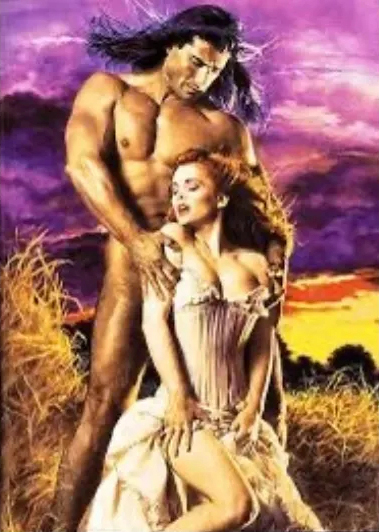
While that is true, in general, women’s art is seen with some disdain regardless of what it is, how well it’s done, or in what cultural/societal conditions it’s made, I’ll save you the feminist rant. For now. You’re welcome. Read more
Never underestimate the commercial value of mental illness.


While that is true, in general, women’s art is seen with some disdain regardless of what it is, how well it’s done, or in what cultural/societal conditions it’s made, I’ll save you the feminist rant. For now. You’re welcome. Read more
And so begins a post (or series of them) (you know how wishy-washy I am) on Dunham, the privateer-heroine and pirate-hero Revolutionary War swashbuckler, which, for those of you not following the serial, will be available for sale JULY 4, 2013.
To kick it off, here’s the final cover for the official book: Read more
For every woman who’s made a fool of a man, there’s a woman who’s made a man of a fool. —Samuel Hoffman (near as I can tell)
I read this quote long, long ago, and I swear to high heaven it was in one book of Anne Rice’s vampire trilogy (maybe Queen of the Damned?).
It resonated with me then and it still does, and I finally figured out why.
This sentiment is the heart and soul of genre romance: What woman doesn’t like to think she has that much power in either direction?
I’ve taken a lot of heat the last couple of months because I dared to say that the bodice ripper romance was a product of its time and thus needed to be considered for the time in which it was written. Is the forced seduction PC? No, and never was. It was a fantasy, a fantasy that, if the contemporary nonfiction literature at the time is to be believed (both anecdotal and academic), was common. Considering the number of those written and sold, I’d say it was a pretty popular one, all dressed up in period clothing and the mores that clothing represented.
Also lately, around the romance blogs, historical and contemporary romance/erotic romance with bodice-ripper elements have been ridiculed, maybe rightly, maybe not. But in a romance reading public that’s taking to male/male romance and BDSM romance, this abhorrence of the longest-running sexual fantasy in romance is bewildering to me. Women have their fantasies. Some of them involve the forced seduction. Is it PC? Absolutely not. Is it valid? Yes.
Genre romance has always thrived on the power imbalance between the male and female, but this has its caveats, and the caveats make up the majority of the fantasy:
Other than the innumerable authors who write the six Harlequin Presents novels every month, I can’t really name any contemporary romance authors who write the “asshole alpha” except, perhaps Susan Elizabeth Phillips, and boy does she write good groveling, viz. Kiss an Angel, which is one of only five romances on my DIK list1 (and the only contemporary).
Lately, Anna Campbell and others have come back with the bodice ripper, but again, they write historical and I don’t think it does anybody any good to pretend that some of these characters are a century or two more enlightened than the people around them at the time.
The power imbalances in my own book have been pointed out to me with startling clarity, and I’ve been chewing on this for days, not because I disagree in the case of Knox and Justice (an homage to the Harlequin Presents line of books I cut my teeth on and my best crack at writing an anti-hero), but because I do disagree in the cases of Giselle and Bryce, and Sebastian and Eilis. I’m not going to go into why because that entails spoilers.
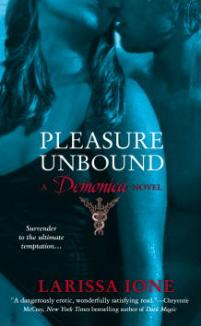
What ultimately brings me to write this post, though, is because lately, despite my professed ambivalence (possibly distaste) for paranormal romance and urban fantasy, I’ve been reading a few books (that I liked!) that have led me to a conclusion:
The asshole alpha still lives and breathes, as assholish as he ever was. The bodice ripper hasn’t gone away. The forced seduction hasn’t lost its appeal.
It’s morphed.
Into demons, werebeasts, vampires, ghosts, ghouls, goblins, and things that go bump in the night. In many, many cases it’s further disguised as the (overused) “one true mate and nature has given us no choice” device.
Only now, because it’s dressed up in con clothes and otherworldly window decoration, it’s perfectly acceptable. Except … some of us don’t care for the window dressing.
I also made a statement a while back that a lot of Mormon authors write our basic tenets and philosophies and beliefs and religious history in science fiction and fantasy, where it’s almost or fully unrecognizable to non Mormons. I said that I thought it was cowardly. I was told by one author that his first instinct was to write science fiction/fantasy and that the incorporation of our doctrine, traditions, and culture was secondary. I believe that—for that author. I don’t believe it across the board.
Why does this happen? Perhaps because suddenly, one person’s fantasy/message is another person’s call to battle?
I don’t write that way. I can’t wrap the bodice ripper up in paranormal and urban fantasy paper and put a shibari bow on it because that doesn’t appeal to me, although the sex probably will. I can’t put a pretty dress on what is, to many readers, an ugly philosophy/belief system in science fiction and fantasy because that doesn’t appeal to me, although the philosophy will.
This is why I like erotica, because, by its very nature and reader expectations, it’s bald. It’s honest. It’s also why I did actually appreciate The Actor and the Housewife for one thing: It put our culture and beliefs and jargon out in the open honestly, naturally, with no apology or preaching.
I want it straight and I write it that way. I call it what it is because that appeals to me, the honesty of it, the setting of human-as-animal in a contemporary world where our baser wants and needs are not only taboo, but ignored as if they don’t exist. And likewise, where our spirituality/religious beliefs offend a whole lot of people, and short shrift is given to the struggle between the natural (human) man and the enlightened (human) one, who attempts to control himself and sometimes simply doesn’t.
I have no issue with control, losing it, struggling with it, conquering the natural man. After all, that’s why we’re here, right? To vanquish the natural man?
But I’m interested in the process.
And the groveling.
Whatever universal truths are revealed in fiction, no matter how they’re portrayed, I don’t give a shit about vampires or demons trying to overcome their natures to be moral creatures because vampires and demons don’t exist.
I don’t give a shit about a being (possibly alien) who drives a spaceship for a living (or who has some fantastical adventure) who’s going through some vague spiritual struggle that Mormons can drill down to the most minute nuance, and might kinda look like Mormonism to anybody with a passing familiarity, because I can’t relate to that.
I can relate to asshole people whose feet are planted on earth, who don’t have regular contact with the boogeyman or aliens, who have no magic or fae blood, no superpowers, who strive and fall and fail and lose themselves in their baser natures, who want something better for themselves but may not know how to get it, who make bad choices and know it even while they’re doing it, who depend on other people or a religion or a deity or a philosophy to help “fix” them.
We all need fixed in one way or another, and there is always a power imbalance in a relationship. It shifts and it changes and it morphs and it takes time to level out as much as it’s ever going to. It’s a neverending process, and sometimes it seems like being on a hamster wheel.
How do I know this?
’Cause I’m an asshole and I strive and I fall and I fail and I lose myself in my baser nature, trying, always striving, for enlightenment. And because I need my husband to “fix” me, and I daresay he needs me to “fix” him, too.
And we both have to grovel.
But please, can we stop pretending the forced seduction romance, and the inherent power imbalance the male has over the female is gone? It’s not. It never will be. We like it too much, and, as a fantasy, it’s no less valid than the up-and-coming PC fantasies of male/male romance or BDSM romance in all its incarnations.
It’s just been driven into the closet.
______________________________
1. A DIK, otherwise known as a Desert Isle Keeper, is the kind of book you’d want with you if your ship went down at sea.
Romance novels are mocked all the time everywhere. That’s not news. What was surprising to me upon my reentry into reading and writing romance, which necessitated entering Romancelandia, the world of romance reader blogs, was that they’re also mocked by people who love romance novels.
Some books deserve it, but some that might seem to deserve it … don’t.
Those are books from the history of romance novels that are mocked for their fashions and specific song references and other tidbits of culture that date them and, quite often, the covers that were made for them at the time. In particular, very often the sweeping scope and larger-than-life characters and plots are mocked. The people doing the mocking, I find, are young and/or young to the romance genre.
I don’t know quite what they expect when they read a book from the 1970s, 1980s, or 1990s that would rightfully be fodder for mockery if written now, but the fact of the matter is, they’re not meant to be timeless in every respect. If one puts oneself into the study of romance novels, to be intellectually honest, one must also be able to sift the culture of the time and how these novels work within that.
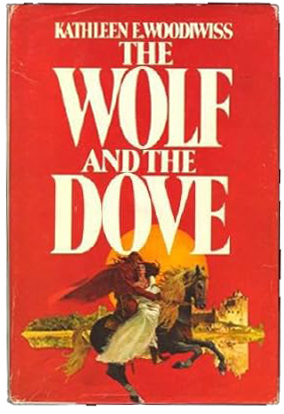
Let me put this in some context. In the early 1970s, a lady named Nancy Friday interviewed women on the subject of their sexual fantasies and published them in a couple of books: My Secret Garden (1973) and Forbidden Flowers (1975), just at the cusp of the “rape romance.” Without taking Friday’s scholarship into account, I find it interesting that many women’s fantasies at that time featured rape prominently. I also find it fascinating that these books were published nearly simultaneously with the early rape romances and thus, probably didn’t inform each other.
And then came the soap General Hospital in 1979, with Luke and Laura, which is, as far as I can tell, the most famous rape romance ever.
Mind, this definition of “rape” is not a legal one; it’s a highly stylized one in which it allows the female to retain her Good Girl status while still A) having sex and B) enjoying it because the hero is a different kind of rapist: One who is attractive, who is uncontrollably attracted to the heroine, and who gets her off after he’s made it possible for her to have an out, i.e., “I was raped.”
Why did she need an out? Because, at the time, a woman’s enjoyment of sex (especially outside of marriage) was still taboo.
(In The Proviso, one couple’s, uh, courtship [heh] is an homage to this era of genre romance.)
As an another aside, there is the shifting definition of “genre.” In the aforementioned 1970s and 1980s, many heroines typically had more than one lover throughout the course of her story, but ended happily with one. This would not happen in genre romance now unless it is a ménage à trois erotic romance.
Now, the heroine who has more than one lover during the course of a genre romance novel would not be meeting the expectations of the average genre romance reader, which is to say, sexual involvement between one man and one woman throughout the course of the book, with a happily ever after ending. (This does not speak to the fact that the male occasionally has other lovers, but in context, and with the understanding that that’s okay because a man has his needs. We haven’t come all that far, baby.)
In fact, in a Twitter conversation with (among others), @mcvane, @victoriajanssen, @redrobinreader, we decided that those romances would now be classified as women’s fiction. Naturally, our word is law.
I’m not sure why there’s this unwillingness to go along with the zeitgeist of the time in which the book was written, but instead to apply today’s standards of fashion or technology or pop culture as markers of timelessness. We don’t expect that of our historical novels, so why do we expect it of “contemporary” romances that cease to be “contemporary” the moment the galleys are finalized?
Me? I like reading the zeitgeist. I don’t miss it if it’s not there, but if it is, it’s a lagniappe for me. It gives me a feel for the time period and takes me back. Perhaps the difference is whether one is too young to be taken back or not. I don’t know.
However, in reading some earlier novels, I find this especially important because a lot of the plot devices realistically used then could not be used now because of advances in technology. If one can accept that it was 1979, and the heroine didn’t receive a letter that the hero had sent and he had no other way of contacting her or finding her to clear up a misunderstanding, one should also accept the blue eyeshadow and feathered hair.
I date my novels for a reason, which is to commit the zeitgeist of the moment in the mind of the reader, leaving no question as to its pop cultural references. In 10 years, no one can say, “That feels so dated.” They’ll have to say, “The author is very explicit about these events occurring between 2004 and 2009. If it feels dated, well, that’s because it is. It says so right in the chapter headings. Go with it.”
The expectation that one should be able to pick up a romance novel (or any other novel) from the 1970s, 1980s, 1990s, and either not be reminded that that was when it was written, or not be offended by some of the themes in the novel borne of the time it was written, seems to me that we wish to either forget that part of our history or cover up the history. More likely, however, is that we may live (and read) in the moment and may be either unwilling or unable to reference the history of the time in which the novel was written.
It’s a shame, really, because a lot of stories’ richness and layering gets lost without the proper historical context.
If you remember, about 100 years ago in blog time, Eugene got lambasted all over the bloggernacle for his book, Angel Falling Softly, for various crimes from “not very spiritual” to “sacrilege” to calls for his excommunication or at the very least, pulling his temple recommend. Eugene’s tab did not fit into the proper slot.
A while back, I came across a blog I keep a little eye on and had commented just to clarify a point. Yesterday I noticed that “Anonymous” had chastised me for acknowledging that my book is filthy (it is) and for dropping the F-bomb in the first line of the story. The chastisement was something along the lines of, “You call that quality Mormon fiction?”
::gallic shrug::
Well, A) “quality” was used in terms of how well the book is designed by the publisher and how well it is constructed by Lightning Source and B) I don’t consider it Mormon fiction.
People have different tastes. Nice, sweet, nearly conflict-less LDS fiction wasn’t cutting the mustard for me with regard to sparkle and (dare I say it?) lust (which doesn’t have to be consummated, but could we acknowledge its existence?). Fiction by Mormon authors out in the wild might be my brand of wild but it’s short on philosophy and faith. Genre romance of any stripe, inspirational to erotica, suffers the same lack of one for the other, so it’s not us. It’s a general lack of crossover between faith and sex.
Slot B47c&&2kd existed, but there was no correlating Tab A47c&&2kd to put in it.
I, Random Reader, wanted my slot filled. I’ve been wanting it filled for a long time. And it remained empty, growing cobwebs. I wasn’t writing it, either, because I wanted to “get” published and you don’t “get” published with a mixture like that.
So I said, “Fuck it. I’ll write what I want.”
As far as I know, I only have 1 (count ’em, ONE) LDS reader who’s managed to get past the first page. That’s okay, too. I probably made a mistake in vaguely hoping I could find a small audience amongst my own who, like me, wanted something titillating and faith-affirming (er, maybe) at the same time. Or, at the very least, not anti.
What I didn’t expect was the positive reaction from non-members who found my portrayal of us as human and extremely fallible, struggling with matters of faith and sexuality, as sympathetic and relatable—and who found the addition of faith to these people’s lives just another layer of their personalities.
Eh, don’t get me wrong. Plenty of people haven’t liked it also, for various reasons including the politics and my prose style and the fact that my characters aren’t, well, very likable at times. But … I don’t like everybody else’s books, either, so no harm, no foul. Regardless of all that, though, who liked it, who didn’t, why or whatever, the fact of the matter was that for this consumer, the market had an empty slot. So I carved out my own tab. And lo and behold! I’m not the only one who liked the shape and size of that tab.
All the foregoing is to say that this past weekend, I was blessed to brainstorm projects with two religious types (one protestant, one Catholic and independent of each other) who also like the s(t)eamier side of genre romance. It doesn’t hurt that I love these two writers’ work already, but these two projects are so outside their creators’ norms AND they are outside of, well, everybody’s norms. And I love them for it. I would never have thought of these two ideas, but these ladies did and their tab fit my slot.
Now, ladies, hurry up and finish those things. I know this publisher, see …
… and the kick-ass heroine.
Came across an interesting article by Jennifer de Guzman about the female audience need for a female superhero. Well, you know, I followed the links to the XY asshole type who said, “No, you really don’t.” Then I went to Jezebel’s post. Read them all, then come back. Josh Tyler (who knows what women want) posts:
Catching bad guys is not a common female fantasy.
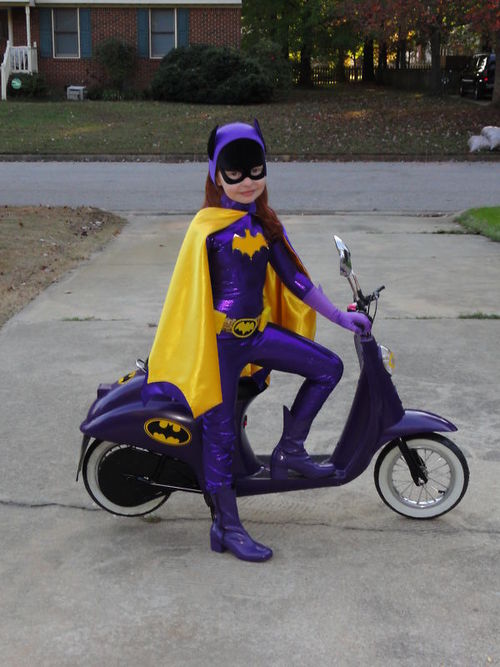 Hey, you know, lemme go back in time to my 7-year-old self and tell Little Miss Batgirl that. (Notwithstanding BatGIRL opens up a whole host of other topics and is problematic in itself.) He further digs his hole:
Hey, you know, lemme go back in time to my 7-year-old self and tell Little Miss Batgirl that. (Notwithstanding BatGIRL opens up a whole host of other topics and is problematic in itself.) He further digs his hole:
Men are interested in imagining themselves as ass-kicking heroes. Women are interested in movies about relationships and romance and love.
Now, this discussion falls under the two of my pet topics: The definition of feminism and the gatekeepers, the gatekeepers in this case being filmmakers. And I gotta say, I can think of only one filmmaker who does the female superhero well (albeit not in WonderWomanish garb): Quentin Tarantino. And he made a lot of money exploiting the hell out of her. What does he know that Josh Tyler doesn’t?
Better yet, what does genre romance know that Tyler doesn’t? This is where the genre romance gatekeepers have stepped up to the plate and it’s where women will find their superheroes, albeit it not in graphix or on celluloid.
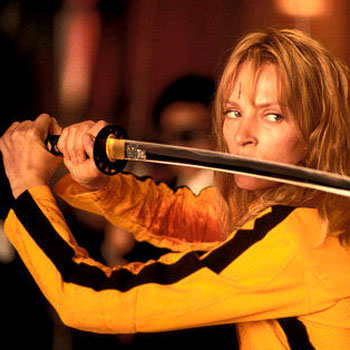 It’s the kick-ass heroine in urban fantasy. They don’t have a Batgirl or Wonder Woman outfit. They don’t have a golden lasso or an invisible plane. Sometimes they don’t come from a mysterious Other World. They have leather. They have a tramp stamp. They have guns or cross bows or daggers or swords or a combination. They prowl the streets looking for wrongs to right and bad guys who need an ass-whoopin’. Yes, yes, I hear Buffy’s name being screamed from the rooftops, but she’s not part of this discussion because …
It’s the kick-ass heroine in urban fantasy. They don’t have a Batgirl or Wonder Woman outfit. They don’t have a golden lasso or an invisible plane. Sometimes they don’t come from a mysterious Other World. They have leather. They have a tramp stamp. They have guns or cross bows or daggers or swords or a combination. They prowl the streets looking for wrongs to right and bad guys who need an ass-whoopin’. Yes, yes, I hear Buffy’s name being screamed from the rooftops, but she’s not part of this discussion because …
… most of these setups (unfortunately) involve otherworldly paranormal goo-drooling and blood-drinking types, and, quite frankly, I get tired of the endless fighting of the supernatural. How ’bout some human baddies? (This is one reason I love Beatrix Kiddo just so damned much.)
Aside: I’m not talking about kick-ass heroines whose JOB it is to be kick-ass. I’m talking about the ordinary woman pulled into extraordinary circumstances and who rises to the occasion [ahem, EILIS], or the anti-heroine who exists outside a societal structure and takes on the role of vigilante as a form of service to society (with hopes of paying restitution or redemption or at least a few cosmic brownie points) GISELLE. Or—better yet—a heroine who starts her journey being a milquetoast and ends up with a spine of steel JUSTICE. After all, we’re not born kick-ass. Life makes us or breaks us that way and the hero’s journey has never been just for men.
So here again we see that the gatekeepers (in this case, filmmakers) don’t know their audience well enough to exploit another revenue stream—but genre romance does! We’ve been subsisting on these women for decades (can you say “pirate queen”?). Clarissa Pinkola Estés even wrote a little book about the kick-ass heroine, her history, and her place in our evolutionary collective subconscious, so this?
Men are interested in imagining themselves as ass-kicking heroes. Women are interested in movies about relationships and romance and love.
He really needs to go talk to Dr. Estés or at least read her book.
Tarantino! Thurman! Thank you for The Bride. I love her. (And all of her wicked evil baddie stepsisters, too!) Now, step up to the plate and give us a female superhero only with spandex this time, ’kay? Call me!
Favorite kick-ass heroines. Who are yours?
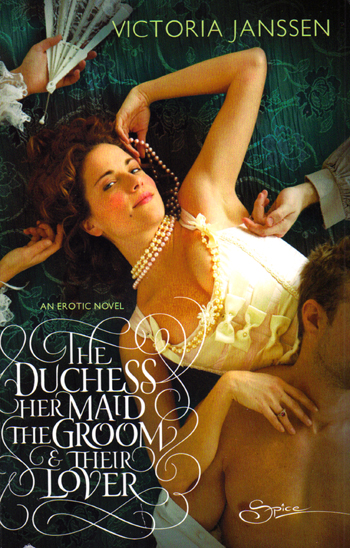 The Duchess, Her Maid, The Groom & Their Lover: An Erotic Novel
The Duchess, Her Maid, The Groom & Their Lover: An Erotic Novel
by Victoria Janssen
Published by Spice
Please note the title and study the cover a bit. Does that say “romance novel” to you? Me, neither.
And yet, despite the absence of the word “Harlequin” anywhere on the cover, on the copyright page, on the “coming attractions” back matter, apparently, Romancelandia thought this was a romance. I don’t know why, unless Romancelandia simply has no history with pure erotica.
There is a difference between romantic erotica and pure erotica (aka could-be-porn-if-that’s-your-definition) and perhaps Ellora’s Cave has just trained Romancelandia to read “romance” or “romantic erotica” where they see “erotic novel” or “erotica.”
I don’t know how this could have been mistaken for a romance.
Moving along. Jessica, over at Racy Romance Reviews, reviewed this and while her review wasn’t necessarily favorable, it was academic (’cause she R 1) and in no way (I thought) insulting. She also admitted that she didn’t have much experience with whatever “pure” erotica really is.
I wanted to read this book, but balked at paying $11.30 for the ELECTRONIC book, so someone took pity on me and sent it to me, requesting that, if possible, I review it because that person was interested in my opinion (though heaven only knows WHY!).
My opinion is that I can’t finish this book.
Why?
The nastiness that went on concerning a liveblogging “review” incident between Dear Author and Smart Bitches (NOT linking). I didn’t read the transcript, so I am not speaking to whether the liveblogging was nasty or not, but the comments on the thread really, really disheartened me. It destroyed any enjoyment I might have gotten out of it and made me want to pick nits where there were no nits to pick.
I read 40% of the book before I simply had to put it down, so I feel very cheated and I’m going to address others’ complaints of the book that apply to what I read and comment on those, then I’ll pick the two very big nits I actually did have.
COMPLAINTS:
 1. Nobody could figure out the setting, but thought it might be somewhere in 17th-18th Century France.
1. Nobody could figure out the setting, but thought it might be somewhere in 17th-18th Century France.
Okay, first, it’s erotica. Have we established this fact? It doesn’t need a setting. It’s a fairy tale and the descriptions were such that I envisioned a Neuschwanstein-type castle.
As long as the descriptions of the castle let you know these characters were amongst lush, and candles were the major source of light, and the clothes were voluminous and bulky, the exact place and time weren’t important.
2. That the sexual situations were totally ridiculous.
3. That Camille’s reasoning for escaping her abusive-cum-murderous husband RIGHT THEN was flimsy.
4. That there just happened to be brothels everywhere along the path they took on their escape route, doubling as inns.
5. There are eunuchs! In a place we think might be 17th-18th Century France. Eunuchs! What the fuck?
STRENGTHS:
I think Jessica summed it up best when she said this:
In some ways, despite the sexual sadism of the Duke, this book offers a very positive view of sex. Sex is the go-to coping strategy for most of life’s problems: Need an heir? Feeling stressed? Husband trying to kill you? Lonely? Bored? Want to show someone you have power over them? Need a place to stay for free? Want to escape those thugs? Need a favor? Want to convince someone to ally with you? Want to thank someone? The answer is sex, sex, sex, sex, and more sex.
That was its strength and its purpose. Why? Because it’s erotica. Have I mentioned that?
Okay, so now that we’ve got all that out of the way, here was my problem with what I read:
NIT ONE:
The cover. Come on. It’s gorgeous, absolutely breathtaking all textured and ripe with hot redhead right there in the center of groping hands and a pearl necklace around her neck (make of that what you will).
Except … Camille is described as having black hair with gray streaks.
FAIL.
NIT TWO, which is the genuine weakness of the book:
The sexual logical inconsistencies. “What?!?!” you cry. “You just finished telling us it was erotica and don’t get hung up on the ridiculousness of it. What could you possibly mean?” Not that way, you silly goose.
1. Camille needs an heir or her husband will kill her. Her husband is shooting blanks. She summons the groom to attempt to impregnate her because any child of his could pass for her husband’s. Okay, so far so good. Sounds like a plan. But immediately after finishing with the groom, she is summoned to her husband’s wannabe de Sade dungeon.
[Her husband] had to fuck her at least once, in case she had managed to become pregnant that afternoon.
Okay. We know she doesn’t want to, but we get the timing issue. But then he doesn’t. And not only does she not worry about this, it doesn’t even occur to her that she missed her chance to cover up her possible switcheroo.
2. Camille’s been married to this dude for 20 years and has been exposed (as a spectator and submissive) to every sexual deviance possible because he’s sick and twisted that way. And yet, this night, the relatively mild antics are … different? And now she’s aroused by them? After 20 years of debauchery? Really? Just now? No, I don’t believe it.
In other circumstances, she might have enjoyed tasting so large a cock, but not in front of the duke.
So … has she or has she not experienced pleasure before? Has she or has she not given head? The implication before this passage is that she had (by force), but at this moment thinks about how delicious it might be if her husband wasn’t watching? Say what? No, I don’t believe it.
I think I would have had a problem with Camille’s contradictory sexual history anyway, but I don’t think it would have made me simply put the book down and not want to pick it up again. The unpleasantness surrounding it combined with that simply destroyed any enjoyment I might have had.
Quite simply, it was a chore to read, which frustrated and disappointed me to no end because it was a book I wanted to read and expected to enjoy.
Since this was given to me, I’d like to pass it along. First person to email me gets it.
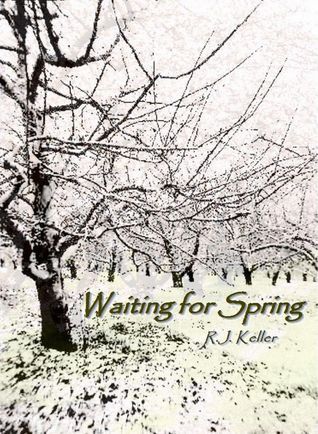 Waiting for Spring
Waiting for Spring
by RJ Keller
It’s been a long time since I threw common sense to the wind and stayed up to finish a book knowing how much I had to do the next day, but not resenting it the next day because it was totally worth it.
This book has no spiffy genre classification. After some thought, I think I’d call it “literary romance.” I don’t know what “women’s fiction” is and I’m not sure I really even know what “chick lit” is, but I’m pretty sure it’s not either of those. And you know, lately, I’ve been very happy with the books that haven’t been easily classified.
Here’s the blurb:
It’s not the kind of pain she can see and smell and wrap with an ace bandage. It’s the kind she tries to numb with sex and work and cleaning-cleaning-cleaning the house. The kind that comes from enduring a lifetime of rejection. First from her mother–whom Tess knows would have aborted her had the law allowed it–then from a string of men whose names she can never remember. And finally, at age thirty-four, from her husband of ten years; the man who once promised to love her forever.
You want angst? I gotcher angst right here, pal. And this is the good stuff, the kind that jerks you around and bashes you over the head and makes you come back for more to see how it all ends. In my experience with literary fiction (one of which was an Oprah pick—sue me), there seems to be some sort of unwritten rule about writing angst, which is to understate it, to let the subtleties of the angst dawn on the reader like a sunrise behind storm clouds.
Problem with that approach is that A) I don’t ever get to know or care about the characters enough to care about their angst and B) their angst isn’t that big of a deal anyway; if the characters clearly don’t care about their angst, why should I? So I’ll read literary fiction, don’t get me wrong, but later, I’ll scratch my head and say (if asked), “Yeah, I think I read that book, but I don’t remember the name or the author.” I just remember dipping my toe in the wading pool of that world once upon a time.
The main character, Tess, has angst and she doesn’t seem to care about her angst, either. But I cared about her angst from the very first paragraph:
They say actions speak louder than words. Maybe. But words do a hell of a lot more damage. Even well-meaning words spoken by well-meaning people.
People like Sister Patricia Mary Theriault. She was my catechism teacher when I was seven years old. Until she ruined my life. [ … ]
Then she told us about the bad soil. [ … ] But the only bad soil I heard about was this:
“As the Sower was scattering the seed, some fell along the path; it was trampled on and–”
Path. Trampled. Bad soil. [ … ]
“Don’t let your hearts become trampled down, children. Keep them soft and fertile so you can feel God’s love inside of you.”
Seven years old. And already I knew I was in some deep shit. The kind that even Sister Patricia couldn’t do anything about.
The twin hyperbolic allegories of “until she ruined my life” and “Seven years old. And already I knew I was in some deep shit” are not, actually, hyperbolic or allegorical, but the reader doesn’t find out why or how until far, far into the book.
You might be tempted to point out that this is simply excellent fiction infrastructure, to which I would say … yeah, I know. But I don’t see that a whole lot anymore. As far as I can tell, the current writing fad is to make me, Random Reader, ask the question and then never let it linger like a good combination of spices on my tongue or let me savor the moment of enlightenment when/if it happens.
Instead, it will ask the question and proceed to answer it for me 2 pages later and sometimes, even worse, will over-explain it in case I didn’t get it fast enough or thoroughly digest all the layers of subtext. I’m very tired of being treated like an idiot in my fiction and, further, I hate that I actually have to call attention to this amazingly annoying trend.
There are quite a few laugh-out-loud lines, sharp. Wry.
When Tess, age 34, takes Brian, age 25, as a lover, they finish, talk, then begin again not long after. Tess observes,
Ready again. Twenty-five. Gotta love that.
Keller also gives the reader glimpses of the spirituality that’s woven all through the tale; they glimmer, like the gold threads in shot fabric:
The stars, he said, were actually souls; all the souls that were too restless to be locked up in heaven. They were so restless that God let them stay outside at night to play.
And when an 8-year-old girl about to take her first communion asks Tess if she believes in God, Tess says:
“Yes, I believe in God. I just … I don’t feel close to him in church.”
“Really? Why’s that?”
I shrugged, even though I knew exactly why. I knew because I’d felt that way since I was a little girl, sitting in my church clothes, listening to the Mass. Trying to feel His presence. Struggling to feel His love. But there was nothing there. Nothing but words I didn’t completely understand and scary status. And then, one beautiful Sunday Spring morning when I was nine years old, something occurred to me. Something I never told anyone else.
He’s not really in here. God doesn’t live inside a building, and that’s all a church is; just a building filled with lots of words. [ … ]
Because Anne [of Green Gables] said that if she really wanted to talk to God, a real true prayer, then she’d have to go outside to do it. She’s need to surround herself with God’s creation, with His beauty; drink it in and let it fill her up. And then she could look heavenward and just feel a prayer.
The narrative itself is choppy, with sentences and paragraphs written in fits and starts, which perfectly mirrors Tess’s personality and her coping mechanisms (particularly her “personality disorder”). In fact, a good portion of Tess’s internal dialog and her observations are written as wry asides to herself and she is inviting you, Random Reader, to chuckle along with her.
And I did. Even while I had tears running down my cheeks.
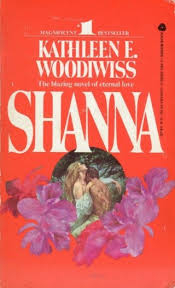 offended.
offended.
I think I’m supposed to be. I’m told I should be. My neck twitches just slightly when I know I ought to be. But I don’t think I am. Am I?
I just can’t muster up the outrage necessary to protest the term. I mean, there are seriously a bunch more important things to do in life and better battles to fight and more important wars to wage.
A friend of mine refers to The Proviso as a “Mormon bodice ripper.” To my recollection, no bodices were harmed in the making of this book, but a pair of shorts was. So … shorts ripper? Cause, that’s where the goods are, folks, and Some People’s Hero really needed to get to Some People’s Heroine’s goods. Right then.
Okay. Anyway.
No, sorry. Can’t be outraged today. Try me tomorrow.
Kept
by Zoe Winters
published by IncuBooks
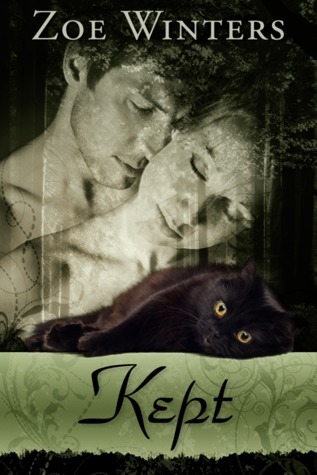 Zoe is an independent publisher I “met” by happenstance when I got soundly thrashed on Dear Author for suggesting that a multi-published author whose 3-book SERIES contract had been canceled after book 2 (leaving her fans out in the cold with characters they loved) actually self-publish the third book in the series (you know, since her rights had reverted back to her and she already has a fan base salivating for it). Good gravy, you’d’a thunk I’d said the Rapture was coming tomorrow and they’d all be left behind and have 666 burned into their foreheads bwahahahahaha burn in hell losers.
Zoe is an independent publisher I “met” by happenstance when I got soundly thrashed on Dear Author for suggesting that a multi-published author whose 3-book SERIES contract had been canceled after book 2 (leaving her fans out in the cold with characters they loved) actually self-publish the third book in the series (you know, since her rights had reverted back to her and she already has a fan base salivating for it). Good gravy, you’d’a thunk I’d said the Rapture was coming tomorrow and they’d all be left behind and have 666 burned into their foreheads bwahahahahaha burn in hell losers.
Anyhoo, as Bob Ross would say, it was a happy accident.
Kept is a free novella you can find at her site (link above) in PDF form. You can find it at Amazon in Kindle for 80¢ and you can find it on Smashwords in various formats for those of us who bitch if we don’t get it the way we want it. Somebody call me a waaaaahmbulance.
And really, “free” is my second-favorite four-letter f-word.
Here’s the blurb:
Greta is a werecat whose tribe plans to sacrifice her during the next full moon. Her only hope for survival is Dayne, a sorcerer who once massacred most of the tribe. What’s that thing they say about the enemy of your enemy?
Now, I don’t do much paranormal and I really don’t like shapeshifters, but throw the word “sorcerer” or “wizard” or “warlock” at me and I’ll take a second look. And I’m glad I did.
Beefs first:
The story was a little choppy in moments of transition, but I’ve seen that so much lately that it doesn’t bother me as much as it used to and, I’m guessing, readers are being taught to get used to it and, by extension, writers are doing it more.
Also, the story could’ve been longer with more explanation of the world. I (Random Reader who likes really really really long books) would have liked that. Let me get you some salt for that opinion.
Good stuff:
What glimpses of their world I got, I liked. I could tell it wasn’t a half-assed world half-thunk-up on the fly, and that it had depth and detail underneath. (Repeat: wanted more.)
I really enjoyed the hero’s crankiness and the fact that he was “old” (how old we’re not told, but I inferred around a century). I liked that when the hero and heroine had sex pretty nearly upfront it was because of species-specific hormone issues (i.e., cat in heat) that she usually controls with medicine, but didn’t have her medicine with her.
I laughed a lot through this book. The banter is witty and cute, seems natural to both of them, and gave the characters the depth that natural humor brings to people.
The cover’s pretty and the interior design is good. In short, it’s right up there with a lot of the novellas in the anthologies by traditional publishers that are on bookstore shelves and much better than a lot of other stuff I’ve read lately from the e-presses that I paid for. I enjoyed myself.
Coulda been longer. Did I say that?
So. If you get it from Smashwords, leave a tip, okay?
I cannot believe a week has gone by and I haven’t posted. Tax Deduction #1 just went into kindergarten and I find myself being forced by the school district to keep a schedule. (Blech.) Being a WAHM is its own precious kind of insanity and my chaos is getting beaten into submission. Thank heavens I still have Tax Deduction #2 to keep my days a little off balance. I just don’t know what I’m going to do when he goes to school, too, and we’re all perfectly regulated and scheduled by default.
FYI, I thought y’all might like to know what editing a book (for me) looks like:
That stack of papers is one manuscript. Take about 100 pages off the top and that’s about how much of a dent I’ve made, which isn’t, admittedly, that much. Once I got through crying over all the bloodletting, though, I’ve started to have a lot of fun.
I’ll admit that when I’m under the gun like this (or otherwise preoccupied with Fun Stuff*), my blog reading goes way down (oh noes! missing drahmah!) and obviously, so does my posting. Hopefully I’ll be back on track in a couple of weeks and with any luck, I’ll get to start really cranking out the pages for book #2 in the Dunham series.
I was, uh, gifted with boxes and boxes of old LDS books, some of which are old-timey LDS romances and some others of which I think might be valuable, so I’m looking into that.
Hey Sam Weller’s. Call me!
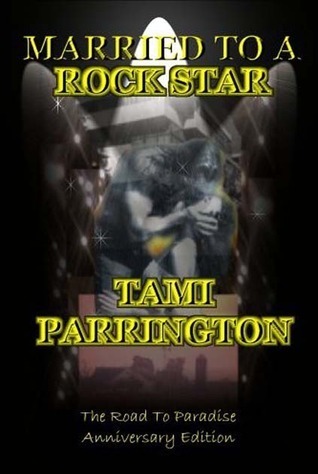 Married to a Rock Star
Married to a Rock Star
by Tami Parrington
published by Prairieview Publishing via Lulu
I read a great review of this book and went immediately forthwith to purchase it. I don’t know whether I’m more upset with the book or with the review, but let’s just say this would’ve been a wallbanger had it not been on my precious ebook reader. I shouldn’t have finished it, really, but I kept reading because I thought surely, somewhere along the way, the heroine would pull her head out of her ass.
Alas.
I wanted to like this book. Really. I thought I would like this book because of the real-life fantasy of it (as in, not elf- fairy- magick-type fantasy). It’s independently published and I want and need to support that community. Thus, I’ve been sitting on this review for several days, thinking about whether I wanted to post it or not.
Here’s the summary:
Out in the country, Karen and her two teenage children have a new neighbor-Isaiah Highland, who is anything but the farm type. Isaiah is a rock-star looking for peace, starving for privacy, and he’s found them both … and a whole lot more. Swept into a world of fame, fortune, and betrayal, Karen finds herself in a world far removed from her little farm.
Two separate worlds …
Worlds bound to collide …
When they do Isaiah and Karen will have to choose between their own versions of paradise … and each other.
Good points:
Bad points:
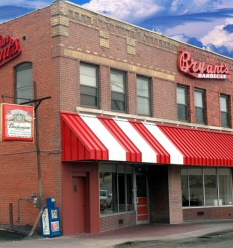
And you know, I could’ve gone with it and had snarkworthy fun with it had not children (impressionable teenagers, yet) been involved in her rapid and willing debasement. For that, I felt dirty after reading this book and I finished it wondering if the reviewer (whose recommendation I took) and I read the same book.
My book doesn’t have a genre. It’s too many things, but two things it is are spiritual and erotic. Okay, so in my mind, I think, “spiritual erotica.” I like it.
Anyhoo, I would like to direct your attention to today’s Thmazing’s Thmusings post by Eric Jepson on “The Erotic in LDS Lit, Part I: Why?” Very thoughtful piece. Tyler of Chasing the Long White Cloud appears on the verge of addressing the subject himself. Then there’s The Visitors’ Center, which is a blog “celebrating Mormon sexuality,” and I’m wondering …
Is this serendipity that a whole bunch of us are coming up with this just in the last couple of years or so or has it been simmering on the back of the stove for a while and is now gathering steam and getting ready to blow?
I was over on Dear Author talking about Breaking Dawn by Stephenie Meyer, which I have not read. One commenter expressed disapproval of Meyer on the basis that she’s a Mormon mother and shouldn’t be writing stuff like that anyway. I will go so far as to guess this commenter was not Mormon because she spelled it “Morman.”
I could crack on Meyer for a couple of different things, but when the religion gets broken out as a generic weapon to say “You can’t write that because you’re a Mormon,” I’m on Meyer’s side. Period.
My first full-on real-life romance novel was Shanna by Kathleen Woodiwiss. Naturally, it’s on my keeper shelf right next to The Wolf and the Dove. I have the ones with the original covers, though they are far from mint. The namby pamby covers on the ones with the links are meh. Unlike most of my contemporaries whose first (or close to it) romance experience was Woodiwiss, mine wasn’t with The Flame and the Flower or Ashes in the Wind, neither of which I cared for.
But she’s not my guilty pleasure.
It’s Carole Mortimer of Harlequin Presents circa 1979 through, oh, I guess around 1986.
I am bored with the below discussion (but don’t let me rain on your parade, so carry on). However, I do need to use it as the springboard for what’s on my ADHD mind today: What, precisely, defines a genre?
We’re very specific in romance. Got an email yesterday from my newest BFF (kidding! but the offer’s open!) who said, “I know you don’t write romance … ” Well, yeah, I do. It’s just got so much other STUFF in it that it can’t be classified, which is why I’m publishing it myself. In fact, it’s got THREE (count ’em, 1, 2, 3) full-length romances going on at the same time all woven together (which is why it’s going to top 700 pages and who-knows-how-many megabytes). And they have sex and there is no fade-to-black and they say the f-word and the c-word. They live a certain political philosophy (some more than others) that will probably be uncomfortable for other types of readers. The story takes place over the course of 5 years and oh, by the way, they’re all in their late 30s and early 40s and wow is that so not part of genre romance.